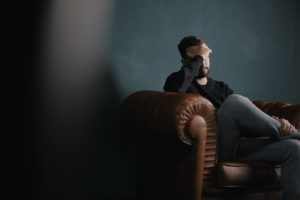Understanding Compulsive Shopping
There has also been a pattern of compulsive shoppers receiving presents instead of attention as a child. As an adult, this causes the addict to continue to feed his or her need for material praise, rather than seeking comfort from other people (Benson). In addition to being emotionally deprived as children, compulsive shoppers may also have experienced some denial of financial security. Many compulsive shoppers were raised with an emphasis on materialistic values. Compulsive shoppers, in their adult lives, have a psychologically motivated need to repair mood and identity issues through material goods (Benson).
There are eight different types of behaviors associated with compulsive shopping. A compulsive shopper may fall under just one of these categories or can meet the criterion for multiple.
-
Collectors
Collectors purchase different sizes or colors of the same item. There is often little to no rhyme or reason for these purchases, except that they feel the need to own the same t-shirt in every different color and size.
-
Bulimic Shoppers
Bulimic Shoppers will buy and then return items. This is only a compulsive disorder when the cycle constantly repeats itself. Most compulsive shoppers who are bulimic shoppers will return the item due to feelings of guilt. These feelings will then morph into feelings of accomplishment, which will be rewarded by another purchase.
-
Codependent Shoppers
Codependent Shoppers buy items in hopes of finding love and approval. These shoppers obsessively buy gifts for family or friends, attempting to find some sort of support for their habits.
-
Hoarding
Hoarding is the excessive purchasing of possessions, even if the items are worthless, hazardous, or bizarre. Hoarding often interferes with the daily functions of life, (i.e. cooking, cleaning, showering, etc.)
-
Compulsive shoplifters
Compulsive shoplifters rarely purchase items. They frequently steal unnecessary items in order to feel an adrenaline rush.
-
Trophy Shoppers
Trophy Shoppers shop solely to find the perfect item. They generally only buy high class items.
-
Image Shoppers
Image Shoppers buy things in order to impress people. They only shop in front of people they know and purchase highly visible, often flashy items.
-
Bargain Shoppers
Bargain Shoppers buy things they don’t need only because they are on sale.
Like any other addiction, compulsive shopping can be a life-long addiction that is never truly cured. The only promising treatment for compulsive shopping is psychotherapy. During this therapy, the addict is encouraged to not only recognize that they are a compulsive shopper, but to dig deeper to find the cause of their behavior. They must work to find the things, or triggers, that make them want to shop. They must asses and understand their behavior, and they must be willing to work in order to develop healthy spending behaviors. Recovering compulsive shoppers are encouraged to find alternative pastimes instead of shopping. Getting rid of credit cards is also recommended. There has also been research about treating compulsive shoppers with antidepressants, since depression is a common underlying cause of compulsive buying.







Is there any software that can interrupt online purchases just before the site charges the credit card?